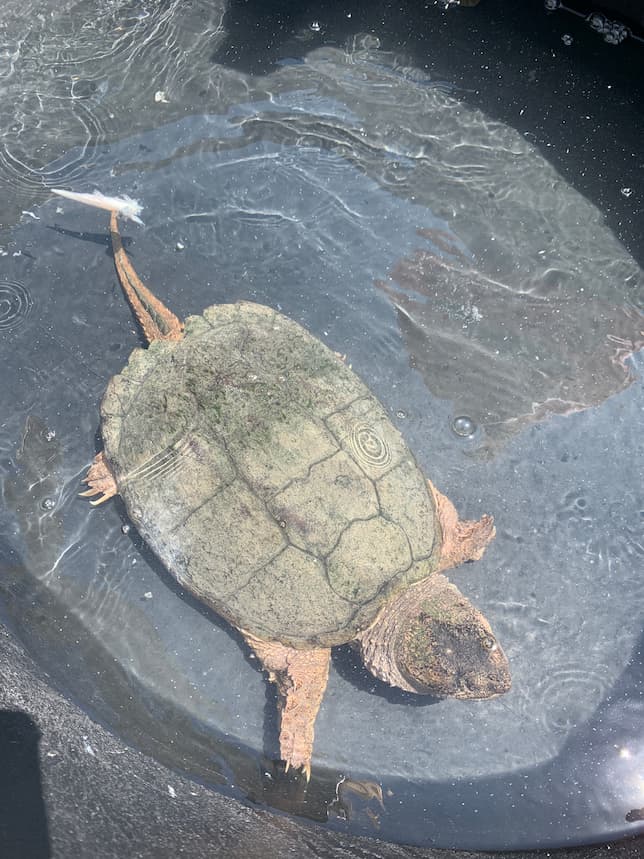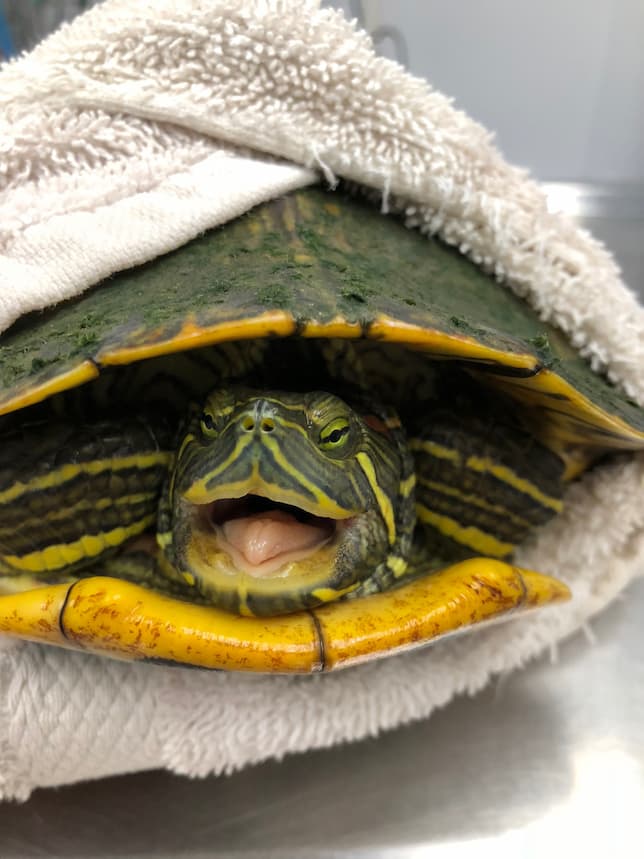Emydomyces testavorans is a recently discovered fungus associated with freshwater habitats that causes shell disease in a wide variety of turtles and terrapins (Woodburn et al 2019; Woodburn et al 2021). The fungus has been found in both wild and human cared for turtles and has been identified in individuals with active lesions and those with no evidence of disease.
E. testavorans was originally discovered in animals housed in captive care but recent studies found that it has the ability to infect and cause disease in wild populations as well (Lambert, MR, 2021).
Once established, lesions gradually eat away at the shell, progressing through the bone which also exposes turtles to infections. These lesions can have a wide variety of presentations from ulcerations of the shell, pitted depressions, discoloration and flaking of the shell, increased pliability of the shell, nodular masses within the shell or abdominal cavity, and cystic nodules.

The presence or absence of E. testavorans can be detected within shell tissues through polymerase chain reaction (PCR) run from swabs or scrapes of shell lesions and/or fresh or frozen tissue. Histopathology and necropsy can also be helpful in identifying whether an infection is present through stained shell tissues in the lab.
The recommended treatment for shell disease secondary to E. testavorans is still being investigated but nebulization of the anti-fungal terbinafine once daily for 28 days has been shown to be helpful, especially in addition to antifungal medication given over a set period of time and repeated in set intervals to help prevent reoccurrence. This is also known as pulse antifungal therapy. Other forms of treatment have included debridement of necrotic shell, packing lesions with terbinafine powder, and covering them with bone wax or cement.

Unfortunately, shell disease is a common cause of illness and death in turtles and the underlying cause for why some turtles will develop more severe disease remains unknown. Turtles can either be asymptomatic carriers or show active evidence of infection; however, those that show evidence of infection are more likely to succumb to severe, chronic disease of the shell and a large number of those severely infected turtles will die.
Identifying the fungus is an important first step which allows us to better understand how the fungus spreads which can help us to develop health management strategies for impacted turtles, and ways to combat potential emerging disease. Having this knowledge provides us with not only the means to quickly diagnose patients and implement possible treatment options, but is also essential in assisting to develop proper handling and biosecurity measures as well.
*Turtle images featured in this article are for visual design. They do not have the disease mentioned.
Written by Tori McCarthy, Affiliate Clinical Year DVM Student




